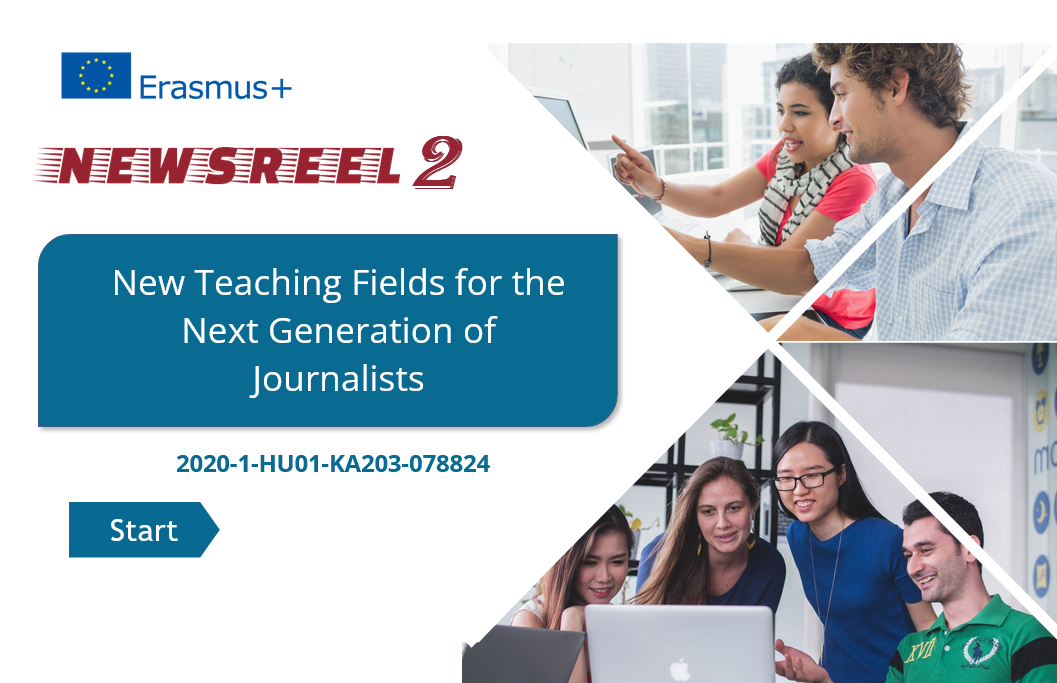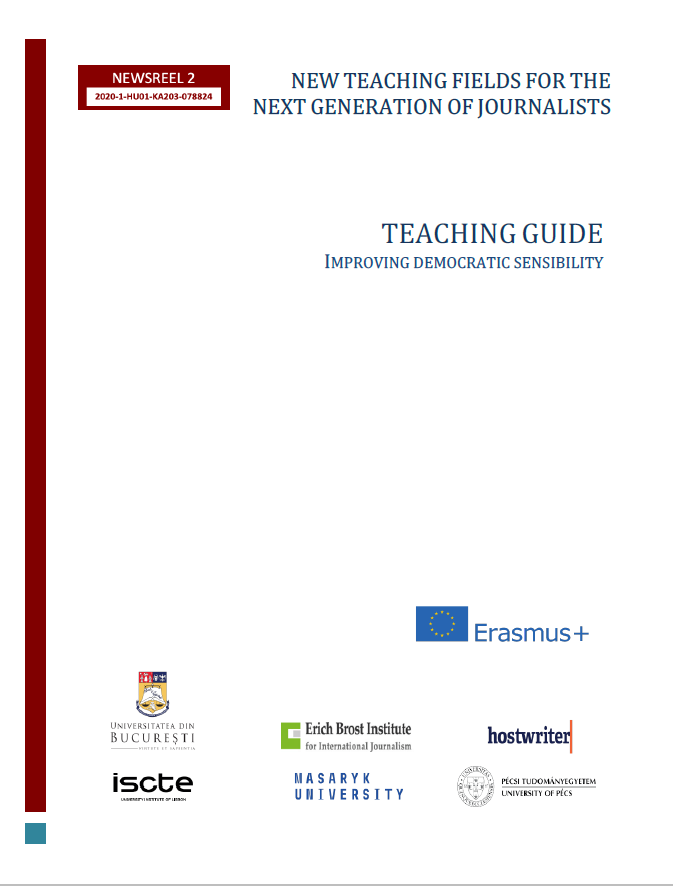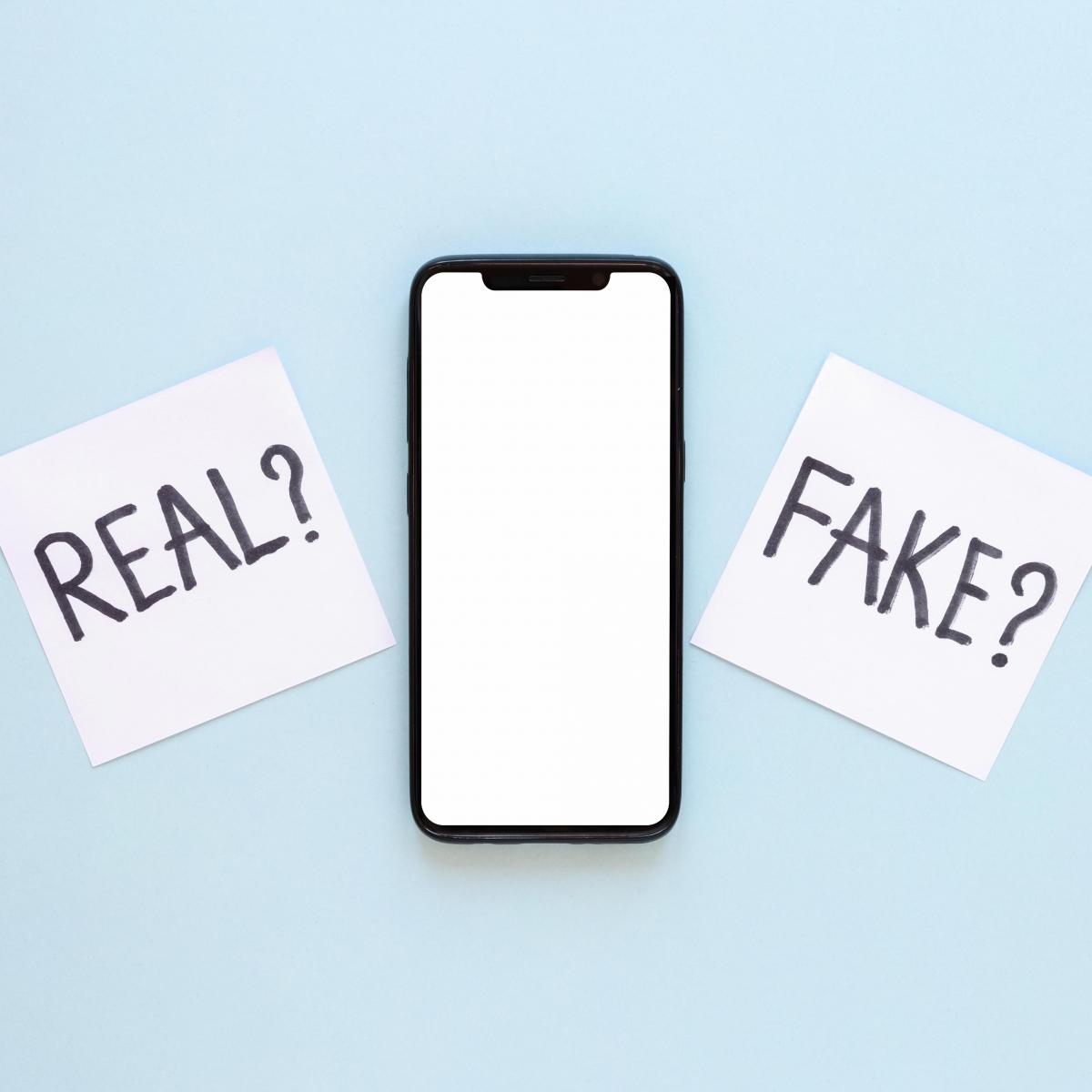 The most important outputs of the NEWSREEL2 project are the e-learning & teaching materials. We had been working very hard for a long time to provide materials that can be key for journalism and media students or we can say, for future journalists in the following fields:
The most important outputs of the NEWSREEL2 project are the e-learning & teaching materials. We had been working very hard for a long time to provide materials that can be key for journalism and media students or we can say, for future journalists in the following fields:
Storytelling in social media; Graphic journalism; Improving democratic sensibility; Covering migration; Foreign coverage; Journalism for voice-activated assistants and devices; AI and journalism, robot journalism and algorithms; Verifying and analysing fake news; Debunking disinformation.
Now all of the materials that was created in the project is published and available in the final form from the e-learning menu of the project portal together with the materials of the first NEWSREEL project! They were primarily planned for blended learning courses of higher educational institutions, but also appropriate for anyone who would like to educate themselves on the highlighted journalistic fields. In this article we introduce their contents briefly. Click on read more!
 Becoming a foreign correspondent still appeals to many beginners in the field, but reporting foreign affairs has changed dramatically in recent years. While both the contents and structures of foreign reporting frequently receive various criticisms, emerging methods such as cross-border collaborative journalism offer promising avenues to address shortcomings and overcome inequalities in the making of international news. The new e-learning course on foreign coverage developed in the NEWSREEL2 project aims to provide journalism students and practitioners alike with an overview of these developments.
Becoming a foreign correspondent still appeals to many beginners in the field, but reporting foreign affairs has changed dramatically in recent years. While both the contents and structures of foreign reporting frequently receive various criticisms, emerging methods such as cross-border collaborative journalism offer promising avenues to address shortcomings and overcome inequalities in the making of international news. The new e-learning course on foreign coverage developed in the NEWSREEL2 project aims to provide journalism students and practitioners alike with an overview of these developments.
The challenges for foreign reporting are plentiful: Permanent correspondents have been made redundant or must cover larger and larger areas. They are often replaced by “parachutists” who are sent to international news hotspots for only a short time, sometimes lacking precise knowledge about the local conditions and culture. Shrinking budgets reduce the ability of newsrooms to invest in the particularly expensive field of foreign reporting. Moreover, newsrooms face vivid debates about properly paying and crediting their local aides, the so-called fixers or stringers.
The article was written by Dominik Speck (Erich Brost Institute for International Journalism)
 The set of activities in Phase 4 aimed at testing and finalizing the syllabi and the e-learning materials of the previous phases, and at summarizing the project results in a form that will help to use the outcomes of NEWSREEL2 by third parties.
The set of activities in Phase 4 aimed at testing and finalizing the syllabi and the e-learning materials of the previous phases, and at summarizing the project results in a form that will help to use the outcomes of NEWSREEL2 by third parties.
As a result of these activities we had courses at the participating universities as a pilot teaching activity. All of the participants organized a one-semester long course. During these courses, we implemented the syllabi and use all of the e-learning materials. The experiences of the courses were summarized in separate teaching guides, each for one field.
The teaching guides introduce the professional and methodological content of the project and the objectives of the courses. They give a detailed description on the skills and competencies developed by our e-learning and teaching materials and a collection of practical examples based on the teaching experiences.
The guides can be downloaded from here:
 Contrary to popular belief, debunking is not merely about dismantling myths; it encompasses two equally important processes. Firstly, it involves rigorously verifying facts, and secondly, effectively disseminating the corrected information.
Contrary to popular belief, debunking is not merely about dismantling myths; it encompasses two equally important processes. Firstly, it involves rigorously verifying facts, and secondly, effectively disseminating the corrected information.
However, this dual task is far from simple, given the increasing complexity of modern techniques used to create narratives that blend truth with falsehoods, mixing opinions and facts. These sophisticated methods that include a wide range of disinformation through various techniques from the emotional spectrum to deep-fakes, in audiovisual content, and widespread trolling would need a sophisticated response from the society - at various levels, technological, organisational, cultural in order to make a difference. A significant majority of individuals under the age of 35 rely on online platforms such as social media, search engines, and news aggregators to access news and information.
The technological challenges are higher than ever. Based on tailored filters, algorithms contribute to the rapid spread of toxic narratives, potentiating them going viral faster than the debunking articles. This creates a situation where misinformation spreads like a virus while the antidote of debunked facts struggles to catch up. Based on NEWSREEL2 discoveries, this article would analyze a few characteristics of how debunking is organised in practice.
This article was written by Manuela Preoteasa (University of Bucharest).
 Media has an important role in spreading the fake news even though false information is not so present in traditional media. Since the presidential elections from the United States in 2016, the “fake news” subject has captured the headlines in the media around the world. News about false information were an important subject debated in the traditional press.
Media has an important role in spreading the fake news even though false information is not so present in traditional media. Since the presidential elections from the United States in 2016, the “fake news” subject has captured the headlines in the media around the world. News about false information were an important subject debated in the traditional press.
According to Silverman (2016), the research shows that in the weeks before the American elections from 2016, the most popular fake news had an increased attention from the public compared to the most read real/true news on Facebook.
But not just the public from the United States is exposed to fake news, because this phenomenon is a global problem. The data shows that a very small percentage of the public directly accesses fake news sites. Fletcher et alii (2018) published a research that followed 300 fake news websites in Italy and France. Neither one has reached at least 1% from the whole online public, and the visitors spent less time on fake news websites than on real news sites.
This article was written by Marian Popovici (University of Bucharest).